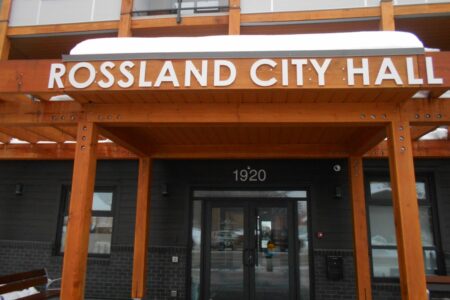Editorial: Our Choice of Voting Systems -- Part Six
Life is never simple, and one decision is generally followed by more decisions. If a majority of voters choose a change to a proportional representation system for BC, more decisions must be made.
Here, we explain how the referendum will be held and what decisions may follow – depending on the outcome – and who will make them.
The referendum:
This fall’s referendum on whether or not we will change BC’s electoral system will be conducted by mail ballot. Registered voters will receive a voting package from BC Elections starting on October 22, and the official voting period will run from October 22 to November 30, 2018.
Who can vote?
Canadian citizens who are 18 years old (or more) as of November 30, 2018, who have lived in BC for at least six months before November 30, 2018, are not disqualified from voting AND who are registered to vote, are able to vote on this referendum.
Want to make sure you’re registered, and that your information is up-to-date? Especially if you’ve moved since the last election, go to: elections.bc.ca/ovr and follow the prompts.
So we vote in the referendum. What then?
What happens next depends on the outcome of the referendum. If the majority of voters choose not to change our voting system, there won’t be any other decisions required for implementation. But if the majority of voters want a system of Proportional Representation, then there will be a number of decisions that must be made. The first decision will be dictated by the voters who answer the second question on the referendum ballot – which system of ProRep to use. Once that is established, both the Legislature and an independent Electoral Boundaries Commission will have to get to work pronto, to get the new system and all its details ready for the next provincial election.
Decisions about the size and shape of regions and electoral districts will be made by the Electoral Boundaries Commission; also the number of First-Past-the-Post (FPTP) districts in each region, and how many List seats in each region, depending on the system chosen. More on that later.
The other decisions, such as what the ultimate number of MLAs will be, and whether List seats will be “open” seats that voters can vote for, or “closed” seats allocated by the political parties, will be made by the Legislature, with recommendations from an all-party committee of the Legislative Assembly. No party would have a majority on that committee. It would have to be set up in the fall of this year, and would be required to present its final report to the Legislature no later than March 31, 2019.
The question of “open” or “closed” Lists depends on whether voters value being able to vote for individual “List” candidates more than we value simplicity of the ballot; being able to vote for “List” candidates makes the ballot more complicated. The all-party committee would hold discussions and seek more input on that issue and others, from independent experts, election administrators and the public.
We currently have 87 Members of the Legislative Assembly (MLAs) – one for each electoral district. The Legislature has already decided that the number of MLAs must not increase by more than eight, for a maximum of 95 MLAs. No matter which ProRep system is chosen, there may need to be a few more MLAs than we have now – just how many more, up to that maximum of eight, would depend on which ProRep system is chosen, and how the electoral districts are configured, inter alia.
Here are the lists of decisions that would still need to be made after the referendum, and by whom, for each of the ProRep systems on the ballot – direct from the Attorney-General’s report.
Readers who are not exceptionally detail-oriented can skip the lists and just scroll down to the section titled “Summing up.” After all, it’s someone else who will do all that work on the necessary decisions if voters choose ProRep — though the public (that’s us!) may have opportunities for further input.
If voters choose Dual Member Proportional (DMP) – Post-referendum decisions for the Legislature:
Total number of MLAs in the province: either a specific number or a range, up to a maximum of 95.
Whether to use “reserve” seat allocation method and if so, for what percentage of seats. (Note: if readers are puzzled by the meaning of “reserve” seat allocation, so am I – totally baffled, even after reading an explanation under “The Reserve” at https://dmpforcanada.com/how-it-works/ — near the bottom. Any readers who can explain it in simple terms, please feel free to make a comment below to help anyone who wants to know, understand what “reserve” seat allocation method really is and how it works — but if not, I’m not going to worry about it. It’s a detail.)
Post-Referendum DMP Decisions for the Electoral Boundaries Commission:
Number and configuration of single-member districts.
Configuration of two-member districts.
If voters choose Mixed-Member Proportional (MMP) — Post-Referendum decisions for the Legislature:
Total number of MLAs in the province: either a specific number or a range, up to a maximum of 95.
Exact ratio of FPTP seats to List PR seats: up to a maximum of 40% List PR seats.
Ballot options for List PR vote:
closed list – the order of candidates is determined by the party, or
open list – voters vote for specific candidates, or
open list with party option – voters can vote for a specific candidate or endorse the party’s order of candidates.
Whether voters will have:
one vote which counts for both the local candidate and the List PR seat allocation, or
two votes, one for local candidate and one for the List PR seat allocation;
Whether candidates for a local FPTP seat may be on the party’s list for regional List PR seats.
Method for determining the order in which List PR seats are allocated.
Whether to permit “overhang” seats – that is, have a fixed number of total seats in the Legislative Assembly – with the potential for added seats to compensate if a party wins a greater share of the FPTP seats than its overall vote share would entitle it to (a few more words on that later.)
Whether the order of candidates on the List PR ballot should be randomized or not.
Method(s) for filling single-member districts and List PR seat vacancies.
Post-Referendum MMP Decisions for the Electoral Boundaries Commission:
Number and configuration of regions.
Number and configuration of FPTP districts in each region.
Number of list seats in each region.
If voters choose Rural-Urban PR — Post-Referendum decisions for the Legislature:
Total number of MLAs in the province: either a specific number or a range, up to a maximum of 95.
Ratio of FPTP seats to List PR seats in MMP regions.
For MMP seats:
Ballot options for List PR vote:
closed list – the order of candidates is determined by the party, or
open list – voters vote for specific candidates, or
open list with party option – voters can vote for a specific candidate or endorse the party’s order of candidates
Whether voters will have:
one vote which counts for both the local candidate and the List PR seat allocation;
two votes, one for local candidate and one for the List PR seat allocation;
Whether candidates for a local FPTP seat may be on the party’s list for regional List PR seats.
Method for determining the order in which List PR seats are allocated.
Whether to permit “overhang” seats – that is, have a fixed number of total seats in the Legislative Assembly – with the potential for added seats to compensate if a party wins a greater share of the FPTP seats than its overall vote share would entitle it to have.
Whether the order of candidates on the List PR ballot should be randomized or not.
Method for filling STV, single-member district and List PR seat vacancies.
Post-Referendum Rural-Urban PR Decisions for Electoral Boundaries Commission:
Number and configuration of MMP and STV regions.
Number and configuration of FPTP districts in each MMP region.
Number of List PR seats in each MMP region.
Number and configuration of STV districts.
If voters choose the Dual-Member Proportional system, there are relatively few decisions for the Legislature and the Electoral Boundaries Commission to grapple with following the referendum.
Both Mixed-Member Proportional (MMP) and Rural-Urban PR (RUP) would require the long lists of decisions noted above, but many of them would not be particularly difficult. A reader has wondered whether the parties would be allowed to include their FPTP candidates for district seats in the parties’ List candidates; that decision is included in those the Legislature would have to make. In my personal opinion, the parties should be allowed to include their district candidates in their group of List candidates as well. After the referendum, we’ll see whether or not the Legislature needs to answer that question, and if so, how it responds.
“Overhang” seats could potentially pose a challenge with both MMP and RUP if they occur. Overhang seats are the number of seats in excess of its proportional share of the popular vote, if a party wins more district seats by FPTP than its fair share according to its percentage of the total votes.
What to do? One party could simply have more seats in the Legislature than it was entitled to according to the popular vote, or the “excess” seats could be removed from it by certain criteria and allocated to other parties as needed to retain proportionality, or the total number of seats could be increased to enable the overhang seat(s) to be retained and still enable the other parties to have their fair percentage of seats. This question may generate much discussion and consultation.
Summing up:
All electoral systems involve trade-offs, and so do some of the details of how they are implemented. Any of the proportional representation systems offered will provide a reasonable level of proportionality, and fair representation of citizens who vote for parties entitled to representation – or for independent candidates who get elected in a district by FPTP.
The decisions that need to be made by the Electoral Boundaries Commission and the Legislature, based on recommendations from the all-party committee (with input from independent experts, election administrators and the public) will enable any of the three systems to be implemented. Then, after experiencing two election cycles with proportional representation, voters will get another kick at the can – to decide whether to keep the new ProRep system, or to revert to FPTP.
In Part Seven, we’ll discuss the arguments being put forward for retaining our current voting system and against voting for proportional representation. Do those objections have merit? Watch this space. Read all sorts of opinions – then consider the facts, and make up your own mind.


























